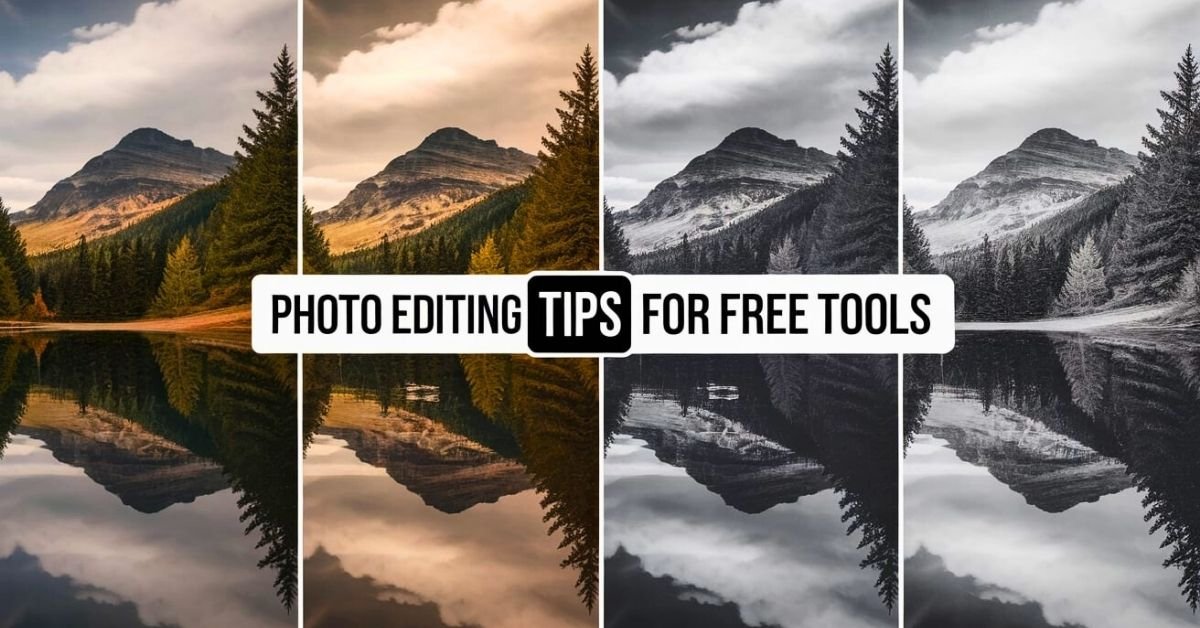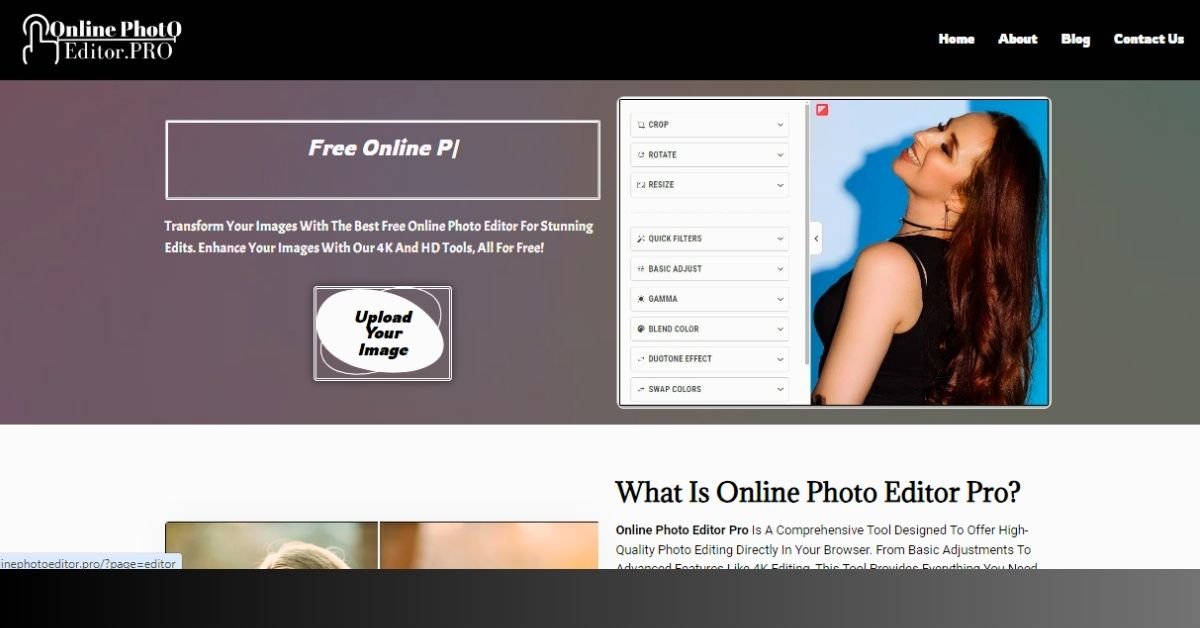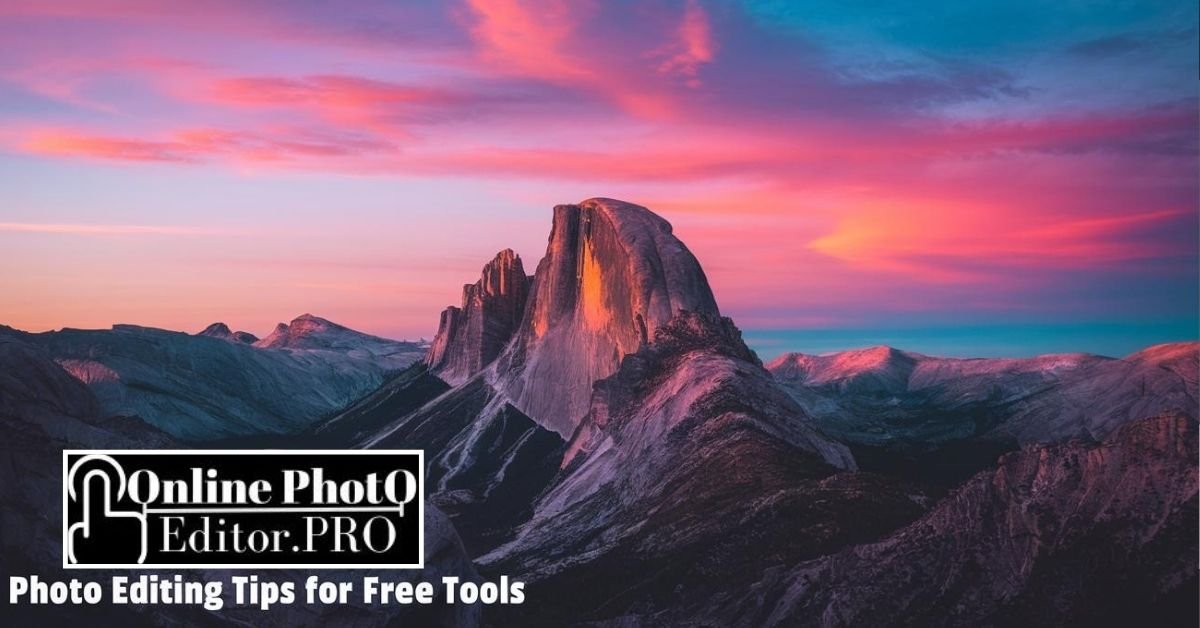In today’s digital age, editing photos is not just a skill reserved for professional photographers or graphic designers. Whether you’re creating content for social media, blogs, or personal projects, learning some essential photo editing tips for free tools can dramatically improve the quality of your visuals. Fortunately, many powerful photo editing tools are available at no cost, allowing anyone to enhance their images without expensive software like Adobe Photoshop.
In this guide, we’ll explore some easy-to-follow photo editing tips using free tools and how they can help elevate your pictures. From basic adjustments to more advanced techniques, you’ll learn how to make the most out of these resources, no matter your level of experience.
What Are Photo Editing Tips for Free Tools?
Photo editing tips for free tools refer to practical advice on how to enhance and retouch your images using free software available online or on your devices. These tools, like Online HD photo editor, GIMP, Pixlr, Canva, and Fotor, offer various features that allow users to adjust brightness, contrast, saturation, and more. They also provide more advanced options like background removal, filter application, and retouching for social media posts or blogs.
With free photo editing tools, even beginners can produce professional-quality images. Understanding how to navigate these platforms efficiently is key to maximizing their potential.
Why Free Photo Editing Tools Are Important
Free photo editing tools have democratized the ability to create visually appealing content. You no longer need to spend money on premium software to make your images look amazing. With these tools, small business owners, content creators, and hobbyists can enhance their visuals at no additional cost, making them accessible to all.
The Benefits of Using Free Photo Editing Tools

1. Cost-Effective
The most obvious advantage of free photo editing tools is that they’re free! Unlike premium software like Adobe Photoshop, which requires a subscription or one-time fee, free tools provide access to essential editing features without any investment. This is particularly beneficial for individuals and small businesses that want professional results on a budget.
2. Easy to Use
Many free photo editing platforms are designed to be user-friendly. They often have simple interfaces and intuitive controls, which make them accessible even to beginners. For example, Canva is widely known for its drag-and-drop functionality, making it ideal for those with no prior design experience.
3. Web-Based Accessibility
Most free photo editors, like Pixlr and Fotor, are web-based, meaning you don’t need to download anything to use them. This makes them accessible on any device, whether you’re on your laptop, tablet, or smartphone. The convenience of cloud-based storage also allows you to access your edits from anywhere.
4. Professional-Level Features
Don’t be fooled by the fact that these tools are free; many of them offer robust editing capabilities. From layering and masking in GIMP to AI-powered enhancements in Fotor, these tools can handle everything from simple adjustments to more complex tasks, giving you the flexibility to achieve professional results.
How to Implement Photo Editing Tips for Free Tools
Learning how to edit images with free tools can be a game-changer, and it all starts with understanding the basics. Let’s dive into some practical steps on how to effectively edit photos using these platforms.
Choose the Right Tool
The first step in editing photos for free is to select a tool that fits your needs. Here are a few popular free tools:
- Online HD photo editor: Online Photo Editor Pro allows you to quickly enhance image quality, apply edits, and achieve high-resolution results quickly.
- GIMP: A powerful, open-source alternative to Photoshop. It offers advanced editing features like layering, masking, and color correction.
- Pixlr: A web-based photo editor known for its simplicity and variety of filters and overlays.
- Canva: Best for social media graphics and quick edits with templates and easy-to-use features.
- Fotor: Offers AI-powered one-click enhancements and a range of editing tools.
Start with Basic Adjustments
Once you’ve selected your tool, start by making basic adjustments to your image, such as:
- Brightness/Contrast: Increasing or decreasing the brightness or contrast can make your image pop or tone it down.
- Saturation: Boosting the saturation can make colors more vibrant, while lowering it can give your photos a softer, more muted look.
- Crop and Resize: Cropping an image can help you focus on the main subject, while resizing ensures your image fits different platforms.
Use Filters and Presets
Most free photo editors come with pre-built filters and presets. Applying these can be a quick way to enhance the mood or theme of your photo. For example, Pixlr offers vintage filters, and Canva provides aesthetic presets designed for Instagram.
Experiment with Advanced Tools

Once you’re comfortable with basic adjustments, try more advanced editing features:
- Cloning Tool: Available in GIMP, this tool allows you to remove unwanted objects from your photos by replicating parts of the image.
- Layers and Masks: For those wanting more control over their edits, using layers and masks in GIMP can allow for complex editing workflows.
- Background Removal: Tools like Canva and Fotor offer one-click background removal, making it easy to create clean, isolated subjects for social media or product shots.
Save in the Right Format
Once your edits are complete, it’s crucial to save your image in the appropriate format. JPEGs are great for web use due to their smaller file size, while PNGs are ideal if you need transparency in your images.
Common Mistakes to Avoid When Editing Photos for Free
Even though free tools are easy to use, there are still some common mistakes to watch out for:
Over-Editing:
One of the biggest mistakes is over-editing your images. While it’s tempting to apply multiple filters and adjustments, too much can result in an unnatural look. The key is to enhance, not overpower, the original photo.
Ignoring Resolution:
Another common mistake is ignoring image resolution. For print-quality images, ensure that your resolution is set high enough to avoid pixelation. For web use, resizing your images can help improve loading speeds without sacrificing quality.
Not Using Layers:
If you’re using an advanced tool like GIMP, not taking advantage of layers can limit your editing potential. Layers allow for non-destructive editing, meaning you can make changes without permanently affecting the original image.
4. Forgetting to Save Progress:
Free tools, especially web-based ones like Pixlr, may crash unexpectedly. Always remember to save your work frequently to avoid losing your progress.
Now that you’ve learned some essential photo editing tips for free tools, it’s time to put them into practice! Explore different platforms and experiment with your photos to see what works best for your content. Whether you’re creating stunning visuals for social media, marketing campaigns, or personal projects, these tools can elevate your photography game without the need for costly software. For more in-depth tutorials and guides, be sure to subscribe to our newsletter and explore other articles on Shadipal.com.
Frequently Asked Questions: Photo Editing Tips for Free Tools:
1. What’s the best free photo editing tool?
There are several great free tools available, depending on your needs. GIMP is a good option for advanced users, while Canva is ideal for beginners focusing on quick edits.
2. Can I remove backgrounds with free tools?
Yes, tools like Canva and Fotor offer free background removal options, which are particularly useful for product photography and social media posts.
3. Is it possible to achieve professional results with free tools?
Absolutely! Free tools like GIMP and Pixlr offer many of the same features found in professional software, allowing you to create high-quality images without spending a dime.
4. How do I resize images for social media?
Most free photo editors, such as Canva and Pixlr, come with pre-set image sizes for different social media platforms. Simply choose the appropriate size before you start editing.
5. Are free photo editing tools safe to use?
Yes, most free tools are safe to use, but always ensure you’re downloading from official websites to avoid malware or phishing attempts.
